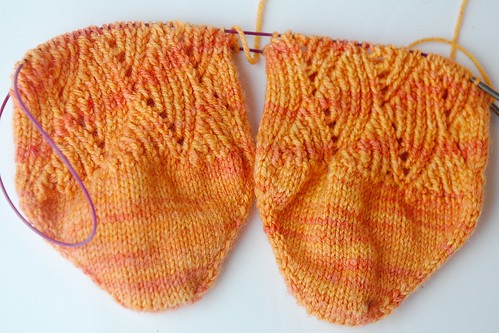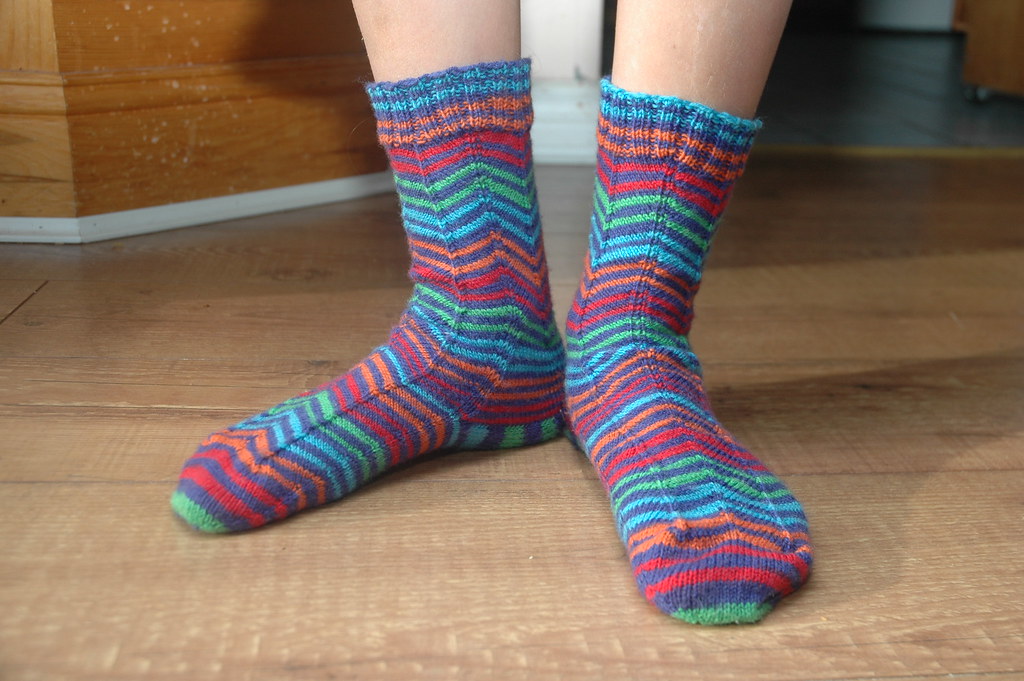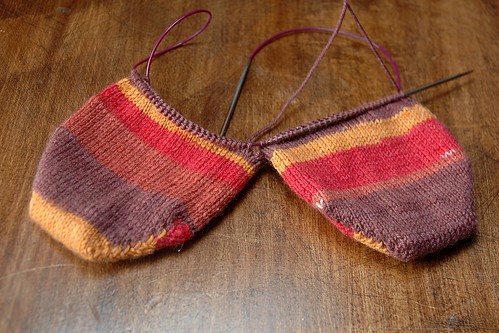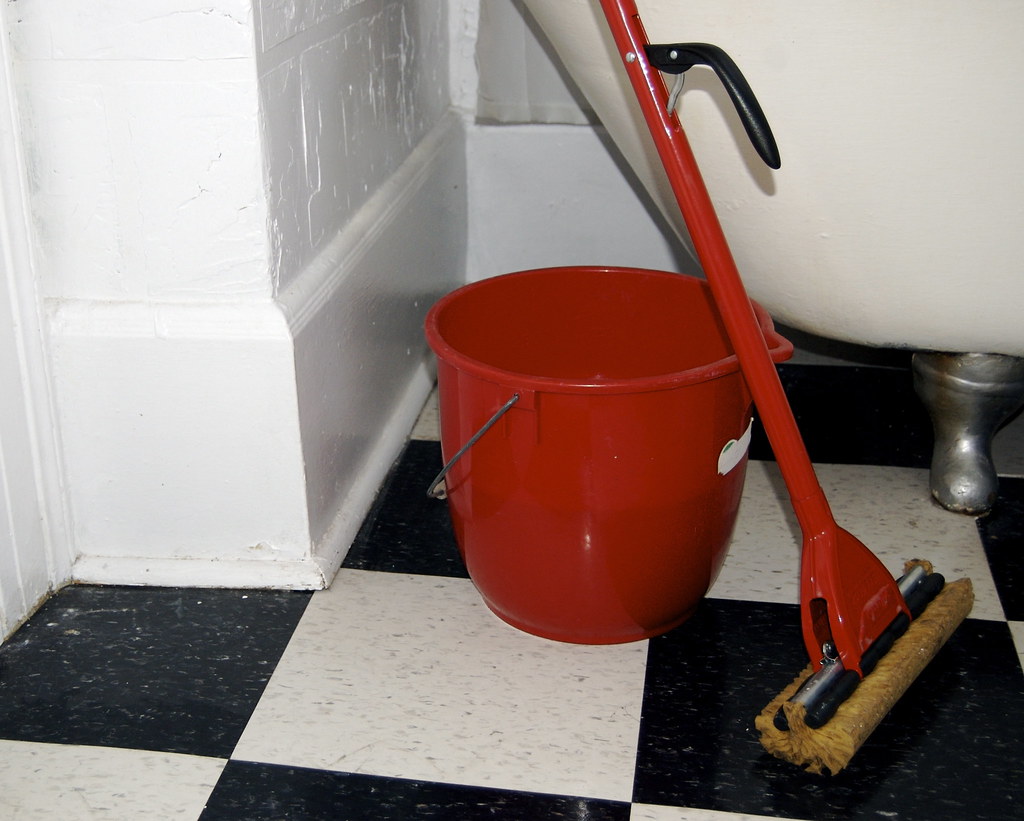One time, I can remember, we were having a backyard barbecue for a few friends. It was raspberry season and I had gone the day before to pick raspberries with my sister. I slaved over the making of two wonderful raspberry/peach pies. I poured my heart into them, even making woven lattice for the top. I couldn't wait to offer them to my guests. A few hours before they were to arrive, I got concerned that we might not have enough food, so I decided to whip up a few loaves of bread. Absent-mindedly, I tossed the loaves together and baked them.
When dinnertime arrived, the comments rolled forth about my bread. "Oh, this is the best bread I've ever tasted." "Oh, I can't believe you make homemade bread." "How in the world do you do this?" "I could never make bread. It is so difficult." I don't think it took more than about 20 minutes of my actual attention. When I served the pies, which were delicious I might add, I think a couple of people said they were good. Humph. THOSE had taken forever!
Many times, I get asked for my bread recipe, which I willingly share. However, several times the recipient has told me their bread didn't turn out the way mine did. That is because bread-making is an art, not a science. You can't just get a recipe, follow it exactly and have great bread. There are a number of factors at work:
- the bread-maker's intuition (which comes from experience)
- the quality of the ingredients (type of flour, freshness of yeast, type of fat/sweetner, etc.)
- the equipment used (oven temperature, pans, mixer, etc.)
- the environment (temperature, humidity)
Mostly Whole-Wheat Bread
makes 3 - 1 1/2 lb loaves
3 c. warm water
1 T. yeast
1/4 c. fat (I prefer melted butter or coconut oil)
1/4 c. sweetener (I use either honey or organic unrefined sugar -- use whatever you like, but no artificial sweeteners, please! We are trying to feed the yeast and yeast, unlike humans, is too smart to consume them.)
1 T. salt (I use a coarse, unrefined gray salt)
6 c. hard wheat berries if you have a grain grinder or 6 cups whole-wheat bread flour, if you don't
3-4 c. unbleached bread flour
1/3 c. gluten flour
(A note about flour: In doing the detective work with people who have told me their bread didn't turn out as well as mine, I have found the culprit is often the flour. The grocery store just doesn't seem like it is a very good place to buy flour. We have purchased for years from a local flour mill and can now buy the same flour at a small local store. (The mill stopped selling directly.) Grinding your own wheat is also an option with many benefits. Alternatively, you could try a food buying co-op or a health food store or maybe a local bakery. The exact brand of flour is not the issue. It is the freshness. Find good, fresh flour and your bread will be much better. Be sure to get 'bread' flour, not all-purpose. It has the highest protein content, making well-developed gluten.)
Place the water in the mixer bowl with the yeast. Stir a little to combine. Leave it to sit for a few minutes while you melt the butter. Yes, you can do this in the microwave and I admit that I often do, but it really isn't good for your food. Just get out a little pot and melt it on the stove. Stir in the salt and sweetener and combine. It doesn't matter if they dissolve. Grind your wheat if you are doing so.

Add the whole wheat flour, gluten flour and butter/salt/sugar mixture to the bowl. Put on the dough hook and turn on the mixer (stir speed at first, then speed 2 when the flour is no longer in danger of flying out) to combine everything. Once it looks pretty uniform, you can either leave it to sit for 15 minutes or so (sometimes I do, mostly I don't) or you can just start adding in your unbleached flour.
With the mixer running on stir speed, I add in the first couple of cups of remaining flour one cup at a time. Allow the dough to assimilate the flour before adding more. After the first two cups, I start adding it 1/4 c. at a time, mixing well after each addition. Knowing when to stop adding flour is a learned skill. You want to watch for the dough to start cleaning the side of the bowl. At first, when there is not enough flour added, you will notice that the dough will start sticking more to the sides. Add some more flour and wait patiently for it to assimilate. Eventually, it will become a nice smooth ball and will clean up the bowl. (If you aren't sure, err on the side of a little too sticky.) Now, you can turn the mixer up to speed 2 to knead the dough.
Knowing when to stop kneading is also a learned skill. With the Kitchen Aid, I find it is somewhere in the neighbourhood of 6 minutes. However, this is a very general guideline. When you think the dough looks nice and smooth and has kneaded for awhile, stop the mixer and pull off a golf-ball sized piece of dough. It should feel a bit like your earlobe. More importantly, though, you can do the 'window test'.

As you can see in the above picture, when stretched, I can see light through my dough without it ripping. This means the gluten has developed enough and the bread is ready to be set aside to rise. If you try to stretch it and you cannot get a window without it ripping, be patient and knead it some more until you can.
Remove the dough from the bowl and put a little splash of oil in the bowl. Form the dough into a ball and turn it around in the oil to coat both the dough and the bowl. Now, cover the dough. It would be much more romantic and healthier to cover the dough with a nice cloth. However, I find that I end up with dough sticking to the cloth, even if I wet it. I hate to post this, but I actually cover it with a plastic bag. (I'm so sorry.) I find it keeps the dough from drying out.
Place the bowl in a warm oven. 110 degrees is ideal, but many ovens don't have a 'proofing' setting. I was seriously ticked off when we bought a new stove and I found out it didn't go below 170 degrees. Apparently, the manufacturers think people are too dumb to cook their food at an appropriate temperature, so they make the oven unable to go below a setting which will sterilize the food. We need the yeast to stay alive to rise the bread, so killing it will not do. What I do is, begrudgingly, put my dough in the oven, set the temperature to 170, turn the timer on for 2 minutes and turn the oven off when it beeps. At no time do I open the door. This seems to work well.
Let the dough rise until doubled, about an hour or so. Punch it down to deflate it and squish it up a bit. Now, I suggest using a kitchen scale, but you don't have to. Measure out 1 1/2 lbs of dough, or just cut it into about 3 equal parts. I like measuring because then they all turn out even. Of course, adjust quantities up or down a little to even things up.
Prepare your pans. My friend, Elisa, shared a kitchen secret that has changed my life. If you combine 1/2 quantity of liquid lecithin with 1/2 quantity of oil, mixed together and brush this very lightly on your pans, grains will never stick to them. It is like magic. No more muffins sticking to the pans. No more bread ripping off in chunks. It is wonderful stuff. :)
(A note about pans. The type of pan you use makes a difference, particularly when baking whole wheat bread. Whole wheat bread needs a slightly narrower pan for support than white bread. My favourite pans are Norpro, which I bought here. She also has great bread bags, by the way. I was also lucky enough to find a few very similar pans with the namebrand 'Kaiser' at Winners, but I haven't seen any there since.)
Shape into loaves. To do this, I form each piece into a ball and then pinch the bottom in a few times. Making nicely shaped loaves is another learned skill. :) Place in pans and return to oven. Make sure they have lots of space around them to rise. Warm oven as above and leave to rise. Watch until the loaves are risen a bit less than you want them to be in the end. Leave them in the oven and turn the oven on to 350 degrees F.
Bake somewhere around 45 minutes, give or take. Knowing when to take the bread out is...say it with me, now...a learned skill. I watch for:
- smell - you can tell when they are done because the house just smells right -- like super-yummy bread, not too yeasty and not overdone. You will get to know the smell. (You can use the smell method for cakes, too, by the way.)
- sight - the bread will be nicely browned all over
- sound - if you tap the bottom, it should sound hollow. I admit that I don't completely get this one, but it might be helpful for you.
Tip the loaves out right away and leave them on a rack to cool. Let them cool as long as your self-control allows before slicing. 30 minutes is pretty good. If you slice them before this, you will probably crush them. I have also heard that too much steam will escape and the remaining bread will dry out too quickly, but we don't have experience with any 'remaining' bread. ;)
Bread Recipe for 20 qt. Hobart Mixer
makes 12 - 1 1/2 lb loaves
12 cups warm water
1/4 c. yeast
1 c. honey/sugar
1 c. melted butter/coconut oil
1/4 c. salt
3/4 c. gluten flour
20 c. hard wheat berries
Approx 8 c. unbleached bread flour
I combine everything but the unbleached flour and then leave to sit for 15 minutes, or just jump into the next step. I follow the basic method outlined above, except that I add in the flour 1 c. at a time. I timed how long I had to knead after adding all the flour and was very surprised that it took 20 minutes on speed 1 before the dough passed the window test.
I need to do two bakings, since my oven will only really hold 6 loaves at a time.
I hope this is helpful to you! I love helping others learn to make bread and would be happy to answer any questions in the comments section. :)























